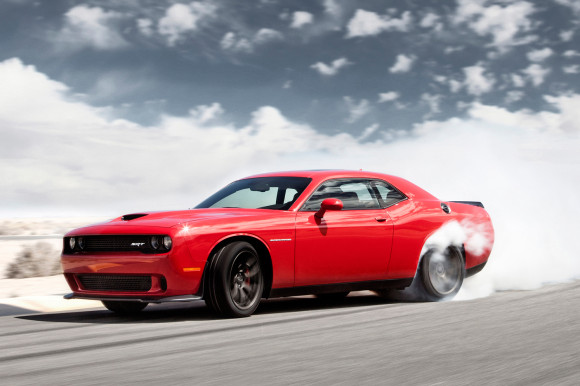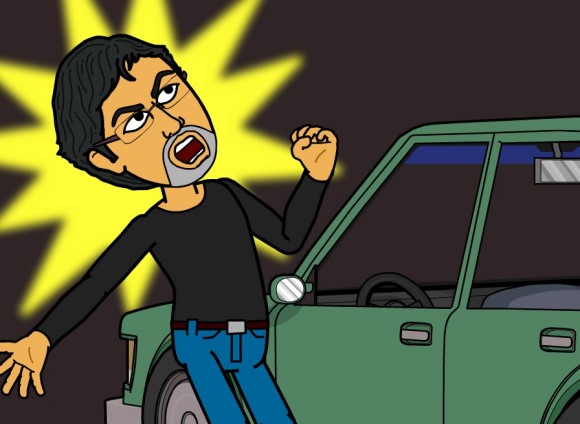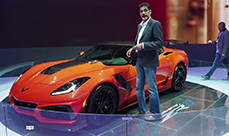Why I don’t turn off traction control anymore
They are no longer add-ons but essential and integral parts of the dynamics
By Shahzad Sheikh
The earliest traction control was probably MaxTrac in a Buick. All the way back in 1971 they actually had a computer in the car that could detect wheelspin and modulate power to the wheels.
By the late 80s traction control systems were available in some high end cars, and started to become a common place feature, particularly in sporty cars, by the end of the 1990s.
Unfortunately until this decade most of them were pretty crap.
Usually the first thing I would do when jumping into a new test car would be to find the traction control button then press and hold until an orange or red light appeared on the instrument panel confirming it had been disabled.
Sometimes it couldn’t be completely turned off. I automatically hated those cars.
The problem was that these systems were largely shut-you-down-flat miserable spoilsports that usually worked by cutting the power or applying braking. The transition would invariably be abrupt and jerky.
So you might break traction at the rear, instinctively go to correct, only to find that the slide had been already been curtailed and your reaction had just left you clumsily heading in the wrong direction.
Imagine you get into a powerful muscle car with about 400bhp and a rear-wheel drive, pour on some revs, stick some lock on the wheel and slam in the clutch – you’re expecting better doughnuts than anything Krispy Kreme can tempt you with.
Instead it’s like a dour-faced moustachioed drill sergeant throwing a bucket of freezing cold water on your head and telling you you’re a hopeless pathetic worm that isn’t worthy enough to be left solely in charge of a powerful motor.
It was joy-sapping and soul-destroying. Not to mention embarrassing. If you attempted to impress your friends with a burnout and a powerslide, your efforts would just look laughable and incompetent.
However – the traction control wizards have been at work, and the latest electronic driving aids are not only better attuned to the car they are affixed to, but are so good now that you’re best off leaving them on.
The newest systems are less intrusive, deploying more tempered interference, and will even allow a bit of leeway depending on the type of car. The best systems are so good that they make you think you’re still in control as they give you a little slip before smoothly taking over.
Some of the very smartest will even work with you, letting you have a load of fun before jumping in to save your arse when you get a little too slide-happy.
They’re not only desirable now, but essential.
Witness Ben Collins’ run up the Goodwood Hill in a pre-production prototype Ford Mustang GT350R – that flat-plane crankshaft V8 is putting out 526bhp and 429lb ft of torque. With the traction control switched off it takes the almighty skills of the former Stig to keep that beast of a machine from spinning off into the grass.
It can’t even set off in a straight line and Collins appears to be fighting the car all the way to the top, like riding a bucking bronco of a pony and surviving but not actually taming.
Watch the video and it perfectly illustrates the problem. There is just too much power in modern performance cars, and the electronic driving aids are no longer get-out-of-jail add-ons that occasionally even compromise the basic chassis engineering.
Instead they’re an actual integral part of the engineering of the car. The only way these cars can be safely let loose upon an unsuspecting public is by designing and developing them from the beginning, to work carefully in tandem with a fully integrated and extremely intelligent set of electronic driver aids.
Turn them all off and the cars actually become undriveable. In fact you can no longer turn them off in most motors, because even when some systems appear dead, they’re merely dormant. The driving-nannies continuing to lurk there in the background – and ready to turn themselves back on.
It’s like when a parent first completely lets go of the bicycle their child is learning to ride on – the hands are still poised and ready to grab on should things start to get even a little wobbly. The kid looking ahead thinks he’s finally riding the bike for himself, the parent huffing and puffing behind remains a safety net.
As bhp figures go up on cars, the tyres also get grippier. To my mind though, all this means is that if they do let go, it will be sudden and at a horrifyingly high speed. Ordinary drivers like me simply don’t have the skills or reflexes to deal with that – we’re not all Stigs.
So now I never turn off the traction control in cars, especially not on public roads – not only for fear of losing it, but simply because I know that’s just not how they’re meant to be driven anymore, and the dynamic set-up of the cars now relies on the systems to be fully active. So selecting Sports and dynamic modes is okay, but I no longer even attempt to disable the systems.
After all, I want to live and I want to test the car as it will be driven by most of the people most of the time.
I tell a lie though. I do still dislike cars that won’t actually allow you to turn the system completely and totally off – because that means they won’t let you do burnouts. It is for example the only beef I have with the gorgeous Mercedes AMG GT S which would otherwise be a perfect machine.
Do you ever turn off the traction control? Tell us in the Comments below
See also:




